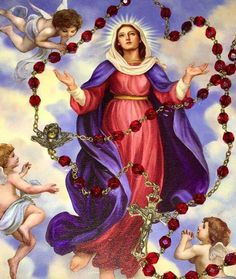NatGeo: ‘The Virgin Mary, the world’s most powerful woman’

Filipinos, known as un pueblo amante de Mariaor “a people in love with Our Lady,” venerated the Virgin Mary as Nuestra Señora del Santísimo Rosario de Manáoag in Pangasinan, Nuestra Señora de Guia in Ermita, Manila, Nuestra Señora de Caysásay in Taal, Batangas, Nuestra Señora de la Paz y Buen Viaje in Antipolo City, Nuestra Señora de Peñafráncia in Naga, Mother of Perpetual Help in Parañaque, et cetera.
To explore the cross-cultural, transcontinental phenomenon of the Virgin Mary, Vanity Fair Correspondent Maureen Orth traveled worldwide and published her findings in National Geographic. “Mary barely speaks in the New Testament,” notes the writer, “but her image and legacy are found and celebrated around the world.”
National Geographic Society boasts a global circulation of 6.4 million, while Vanity Fair, a magazine of popular culture and high fashion, has more than a million – both magazines are non-sectarian. Writes Maureen Orth:
“Praying for the Virgin Mary’s intercession and being devoted to her are a global phenomenon. The notion of Mary as intercessor with Jesus begins with the miracle of the wine at the wedding at Cana, when, according to the Gospel of John, she tells him, ‘They have no wine,’ thus prompting his first miracle.
“It was in A.D. 431, at the Third Ecumenical Council, in Ephesus, that she was officially named Theotokos, Bearer of God. Since then no other woman has been as exalted as Mary.”
One seldom finds an excellent piece of Marian discourse (5,000 words) in a secular magazine such as National Geographic, so I quote the writer verbatim:
“As a universal symbol of maternal love, as well as of suffering and sacrifice, Mary is often the touchstone of our longing for meaning, a more accessible link to the supernatural than formal Church teachings. Her mantle offers both security and protection. Pope Francis, when once asked what Mary meant to him, answered, ‘She is my Mamá.’”
Maureen Orth continues: “The image in Mexico of Our Lady of Guadalupe is one of the most reproduced female likenesses ever. Mary draws millions each year to shrines such as Fátima, in Portugal, and Knock, in Ireland, sustaining religious tourism estimated to be worth billions of dollars a year and providing thousands of jobs.
Expressing her own devotion to Mary, the writer recaps the Marian phenomenon: “She inspired the creation of many great works of art and architecture (Michelangelo’s Pietà), as well as poetry, liturgy, and music… And she is the spiritual confidante of billions of people, no matter how isolated or forgotten.”
Mariology: The interfaith studies on Mary
Finally, Maureen Orth makes an attempt to offer a theology to explain why Mary is the world’s most powerful woman.
“Muslims as well as Christians consider her to be holy above all women, and her name Maryam appears more often in the Koran than ‘Mary’ does in the Bible.” In the New Testament, Mary speaks only four times, beginning with the Annunciation, when, according to Luke’s Gospel, the angel Gabriel appears to her and says she will bear “the Son of the Most High.” Mary answers, “Here am I, the servant of the Lord.”
The role of Mary in salvation history began when the INCARNATE WORD “was made flesh” in the womb of Mary on March 25 during Annunciation. Count nine months later, and Jesus was born in Bethlehem. For her role, YHWH God has prepared Mary thoroughly when she was exempted from Original Sin in her Immaculate Conception (December 8) – then count nine months and she was born on September 8.
Also found in Luke’s Gospel is Elizabeth’s words to Mary: “Blessed art thou amongst women, and blessed is the fruit of thy womb, JESUS!” (Luke 1:42 43). In his book The Glories of Mary (1888), Alphonsus de Liguori concludes: Caro Jesu caro Mariae est. It means “the flesh of Jesus is the flesh of Mary” one hundred percent because Jesus was conceived by the Holy Spirit in the Virgin Mary, who “knew no man.”
As Theotokos, Mary gave the world the Victim, the Lamb of God, fully Divine and fully human, to be slaughtered using a human body, with her own DNA/46 chromosomes, shedding human blood to “wash away our sins.”
Years ago, Time Magazine displayed a rather unusual cover story, “Hail Mary,” with this brief description: “Protestants seldom talk about Jesus’ mother at Easter. But they are starting to now” (March 21, 2005).
Ave Maria!
Jose Mario Bautista Maximiano (jomaximiano@gmail.com) is the author of 24 PLUS Contemporary People: God Writing Straight with Twists and Turns (Claretian, 2019).

